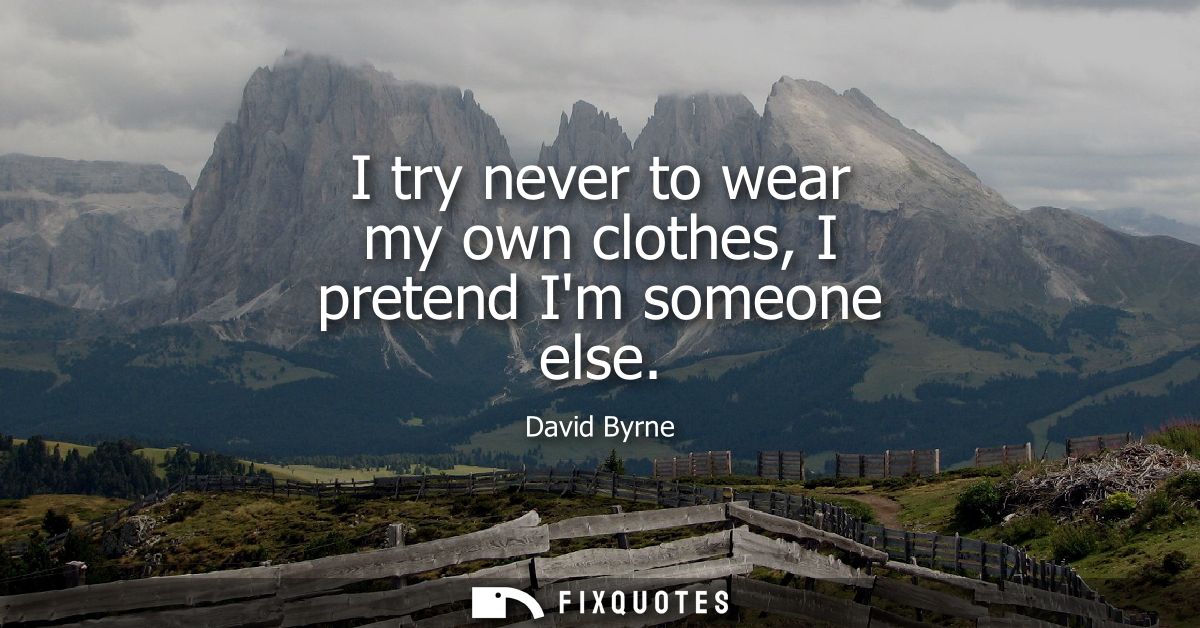"I try never to wear my own clothes, I pretend I'm someone else"
About this Quote
A private manifesto of performance lies underneath the line: identity is a costume, not a prison. Clothes are shorthand for the person we believe we are; changing them loosens the knots of habit. To refuse “my own clothes” is to refuse a fixed biography, to unhook the ego from its wardrobe and its reflexes. When the outfit shifts, the posture, gait, voice, and expectations shift too. The body learns new rhythms; the mind follows. Pretending to be someone else becomes a tool for discovery rather than deception.
Artifice, here, isn’t the opposite of authenticity; it’s the route to it. By stepping into a persona, an artist disarms the inner censor that polices what is “really me.” A mask can be a key: freed from the self’s familiar script, one can say the unsayable, move strangely, make the ordinary suddenly new. The performer’s oversized suit, absurd, architectural, does not hide the human; it magnifies the social structures that already shape us. The costume makes the invisible visible.
There’s also a critique of consumer identity. “My own clothes” suggests ownership as a trap, a brand that brands back. If we are what we buy, then refusing to wear “mine” breaks the loop of self as commodity. Borrowed garments, borrowed voices, borrowed gestures: a collage-self announces that the individual is always collective, built from other people’s patterns. This is not theft but empathy. Trying on different skins teaches how contingent one’s “natural” skin is.
Life is stagecraft; every room is an audience. Most of us play our roles unconsciously. Choosing to pretend consciously returns agency. It permits reinvention, mischief, and critique. The self expands by rehearsal: today a bureaucrat of rhythm, tomorrow a tourist in one’s own city, next week a dancer learning to stand still. The persona is both armor and portal. Through it, a person can become multiple, and sometimes, paradoxically, more true.
About the Author

